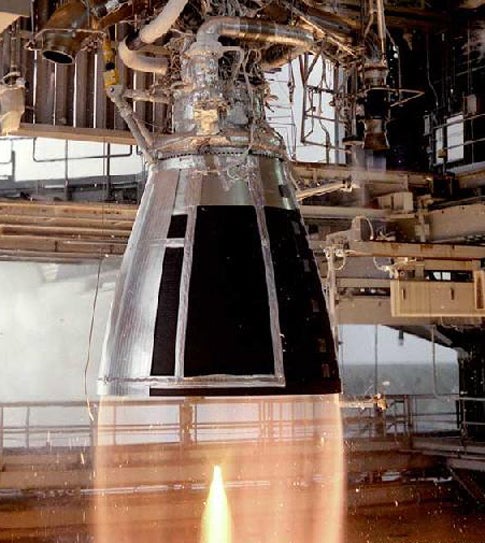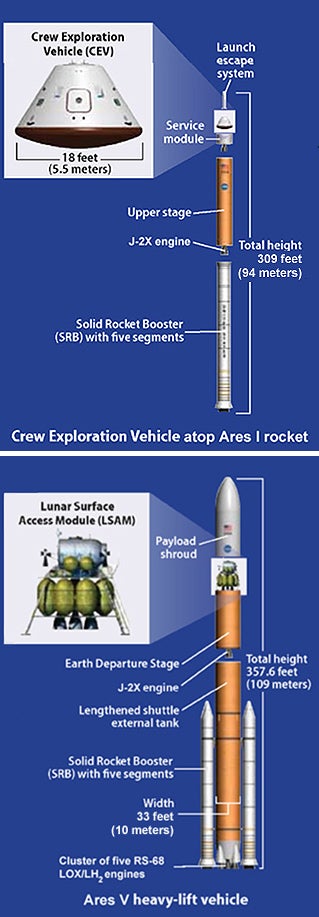As the space shuttle Discovery prepared for launch Friday, NASA announced the name of its replacement. The Crew Launch Vehicle, which will ferry astronauts to Earth orbit as early as 2011, is now called Ares I. The monstrous heavy-lift rocket, designed to loft cargo headed for the Moon later in the decade, is called Ares V.
Ares, the Greek word for Mars, is a nod to the agency’s vision of one day sending astronauts to the Red Planet. The numerical designations salute the Apollo-era Saturn I and Saturn V rockets, the first large U.S. launchers specifically designed for human spaceflight. “We honor the past with the number designations and salute the future with a name that resonates with NASA’s exploration mission,” says Scott Horowitz, associate administrator for the agency’s Exploration Systems Directorate in Washington.
Both of the new vehicles use components derived from the space shuttle program, but, in May, the agency tweaked both rocket designs to save money.
When NASA unveiled its plans last September, reusable Space Shuttle Main Engines (SSMEs) were tasked for Ares I’s upper stage. SSMEs cost $80 million each and would require additional development to lower costs enough that they’d make sense on a disposable rocket. Also, using an SSME on an upper stage, where it must ignite at high altitude instead of on the ground, was expected to hike costs further.
Ares I’s first stage has been tweaked, too. Initial plans called for it to use a single four-segment Solid Rocket Booster (SRB) identical to the solid-fuel component of today’s space shuttle. Instead, Ares I will use a new five-segment SRB.
The move away from SSMEs on Ares I opened the door for changes on Ares V. The cargo-lifter’s first stage was originally designed as a five-engine SSME cluster, but it now will use modified versions of the RS-68 engine from Boeing’s Delta IV rocket. This is the first large liquid-fueled engine developed in the United States since the SSMEs.
The RS-68’s simplified design results in fewer parts compared to engines of equivalent size or performance, and the engine’s sea-level thrust is about 55 percent greater than shuttle main engines. But it was price that clinched the case. NASA can buy four RS-68s for the current price of one SSME.
The switch also forces a change to the Ares V’s first stage. While the RS-68 develops greater thrust, it’s less efficient than an SSME. Ares V’s first stage has been widened to 33 feet (10 meters) to allow for the increased fuel required.
The Crew Exploration Vehicle (CEV), which will carry astronauts into orbit, and the Moon-landing Lunar Surface Access Module (LSAM) remain the only unnamed components of NASA’s new human-spaceflight architecture. Reports indicate the agency is considering the name Altair for the CEV and Artemis for the LSAM.











